Which of the following solution contains approximately equal hydrogen ion concentration
100mLof0.1MHCl+50mLH2O
75mLof0.1MHCl+75mLH2O
50mLof0.1MH2SO4+100mLH2
100mLof0.1NH2SO4+50mLH2O
The correct Answer is:C, D
To determine which of the given solutions contains approximately equal hydrogen ion concentrations, we will analyze each option step by step.
Step 1: Analyze Option A
- Given: 100 ml of 0.11 M HCl + 50 ml of H2O
- Total Volume: 100 ml + 50 ml = 150 ml = 0.15 L
- Moles of H⁺:
Moles of H⁺=Molarity×Volume=0.11M×0.1L=0.011moles
- Concentration of H⁺:
Concentration=Moles of H⁺Total Volume=0.0110.15≈0.0733M
Step 2: Analyze Option B
- Given: 75 ml of 0.1 M HCl + 75 ml of H2O
- Total Volume: 75 ml + 75 ml = 150 ml = 0.15 L
- Moles of H⁺:
Moles of H⁺=0.1M×0.075L=0.0075moles
- Concentration of H⁺:
Concentration=0.00750.15=0.05M
Step 3: Analyze Option C
- Given: 50 ml of 0.1 M HCl + 100 ml of H2O
- Total Volume: 50 ml + 100 ml = 150 ml = 0.15 L
- Moles of H⁺:
Moles of H⁺=0.1M×0.05L=0.005moles
- Concentration of H⁺:
Concentration=0.0050.15≈0.0333M
Step 4: Analyze Option D
- Given: 100 ml of 0.1 M HCl + 50 ml of H2O
- Total Volume: 100 ml + 50 ml = 150 ml = 0.15 L
- Moles of H⁺:
Moles of H⁺=0.1M×0.1L=0.01moles
- Concentration of H⁺:
Concentration=0.010.15≈0.0667M
Summary of Concentrations
- Option A: 0.0733 M
- Option B: 0.05 M
- Option C: 0.0333 M
- Option D: 0.0667 M
Conclusion
From the calculations, we find that:
- Option A: 0.0733 M
- Option D: 0.0667 M
Options A and D have approximately equal hydrogen ion concentrations. Therefore, the correct answer is Option D.
- Given: 100 ml of 0.11 M HCl + 50 ml of H2O
- Total Volume: 100 ml + 50 ml = 150 ml = 0.15 L
- Moles of H⁺:
Moles of H⁺=Molarity×Volume=0.11M×0.1L=0.011moles
- Concentration of H⁺:
Concentration=Moles of H⁺Total Volume=0.0110.15≈0.0733M
- Given: 75 ml of 0.1 M HCl + 75 ml of H2O
- Total Volume: 75 ml + 75 ml = 150 ml = 0.15 L
- Moles of H⁺:
Moles of H⁺=0.1M×0.075L=0.0075moles
- Concentration of H⁺:
Concentration=0.00750.15=0.05M
- Given: 50 ml of 0.1 M HCl + 100 ml of H2O
- Total Volume: 50 ml + 100 ml = 150 ml = 0.15 L
- Moles of H⁺:
Moles of H⁺=0.1M×0.05L=0.005moles
- Concentration of H⁺:
Concentration=0.0050.15≈0.0333M
- Given: 100 ml of 0.1 M HCl + 50 ml of H2O
- Total Volume: 100 ml + 50 ml = 150 ml = 0.15 L
- Moles of H⁺:
Moles of H⁺=0.1M×0.1L=0.01moles
- Concentration of H⁺:
Concentration=0.010.15≈0.0667M
- Option A: 0.0733 M
- Option B: 0.05 M
- Option C: 0.0333 M
- Option D: 0.0667 M
From the calculations, we find that:
- Option A: 0.0733 M
- Option D: 0.0667 M
Topper's Solved these Questions
- SOME BASIC CONCEPTS AND MOLE CONCEPTBOOK - CENGAGE CHEMISTRY ENGLISHCHAPTER - SOME BASIC CONCEPTS AND MOLE CONCEPTEXERCISE - Exercises Single Correct
88 Videos
- SOME BASIC CONCEPTS AND MOLE CONCEPTBOOK - CENGAGE CHEMISTRY ENGLISHCHAPTER - SOME BASIC CONCEPTS AND MOLE CONCEPTEXERCISE - Exercises Assertion-Reasoning
10 Videos
- SOME BASIC CONCEPTS AND MOLE CONCEPTBOOK - CENGAGE CHEMISTRY ENGLISHCHAPTER - SOME BASIC CONCEPTS AND MOLE CONCEPTEXERCISE - Exercises Multiple Correct (Limiting Reagent)
7 Videos
- S-BLOCK GROUP 2 - ALKALINE EARTH METALSBOOK - CENGAGE CHEMISTRY ENGLISHCHAPTER - S-BLOCK GROUP 2 - ALKALINE EARTH METALSEXERCISE - Ex 5.1 Objective
2 Videos
- STATES OF MATTERBOOK - CENGAGE CHEMISTRY ENGLISHCHAPTER - STATES OF MATTEREXERCISE - Exercises (Ture False)
25 Videos
Similar Questions
Knowledge Check
Which of the following compounds contain more acidic hydrogen than hydrogen of
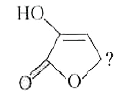 A
A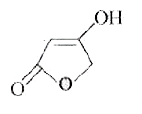 B
B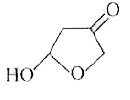 C
C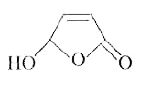 D
D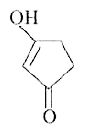
Which of the following compounds contains most acidic hydrogen?
AH3C−O∣∣C−HBH3C−O∣∣C−CH2−O∣∣C−CH3CH3C−O∣∣C−CH2−O∣∣C−OCH3DH3C−O∣∣C−CH2−O∣∣C−..NH2
Which of the following does not contain the true peroxide ion?
View SolutionWhich of the following compounds has dipole moment approximately equal to that of chlorobenzene?
View SolutionThe pH of two solutions A and B are 6 and 8 respectively. Now answer the following questions:
(i) Which solution has more hydrogen ion concentration?
(ii) Which solution is acidic and which one is basic?
View SolutionWhich of following solution is most concentrated?
View SolutionWhich of the following sets contain only isoelectronic ions?
View Solutionwhich of the following contain most acidic hydrogen
View Solution